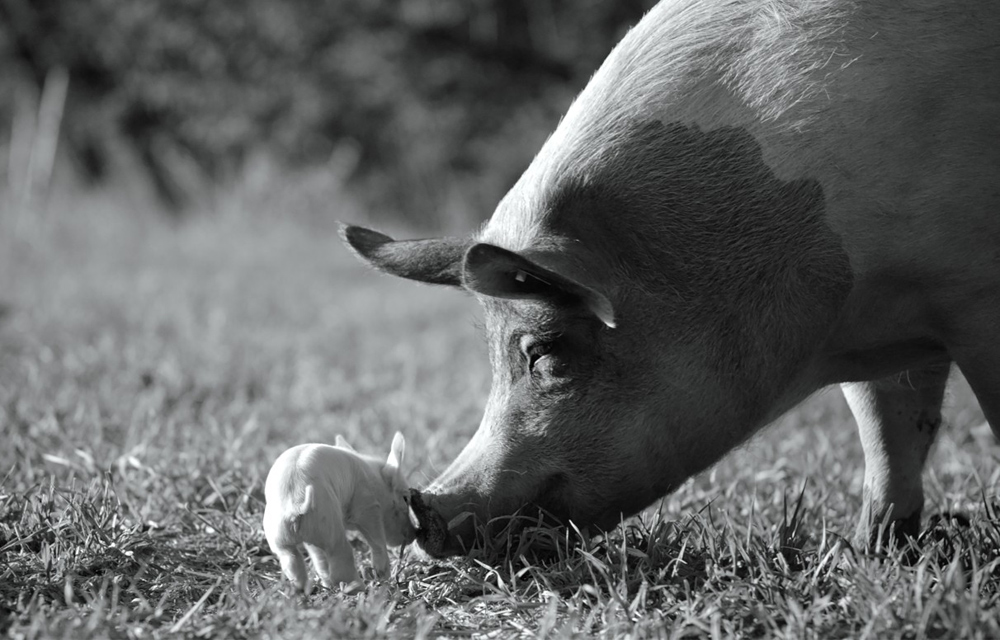You first meet the title sow of “Gunda” as she lays to the side, her head popping out the door of a shed ever so slightly on a bed of hay, with Victor Kossakovsky’s stark black-and-white cinematography not allowing one to know whether she’s alone when all you can see inside the shed is darkness. It turns out she isn’t, at least not for long as a trail of piglets begin bursting out of the shed like kernels of popcorn, tumbling down the mountain of hay and making their way out into the sun like the movie stars they are, finding their footing before the necessity to feed kicks in, leading them back into the shed to suckle at their mother’s teat.
There’s no narration or music to accompany this miracle of birth, or seemingly any humans around to witness it since they are never seen in front of the camera in “Gunda” and the thought of a documentary crew even being there quickly disappears. Yet the film’s simplicity, capturing life on farm where Gunda shares space with a host of cattle and a handful of roosters, is clearly the result of remarkable technical sophistication on the part of Kossakovsky, who previously made climate change tangible by making every crack in the ice shelf feel like the sound of a dagger sinking in “Aquarela” and finds the soul in every living creature that graces the screen in his latest by immersing audiences so thoroughly in their experience of the world.
Although one wonders how Kossakovsky was able to get so close to Gunda and her brood, particularly in a shed that would seem too small for any human to enter it, it is the dozens upon dozens of channels of sound the director and sound designer Alexander Dudarev utilize on a Dolby Atmos soundtrack that make the farm come alive as every whisper of wind can be felt on the back of your neck and the sounds of flies are so authentic you’re liable to swat away at air. The sound also is what ties the experience together between the different sets of animals the film follows — like “Aquarela,” which treated the world as one interconnected filming location, “Gunda” was shot across farms and sanctuaries in Norway, Spain and the United Kingdom, yet appears as if it’s filmed on the same patch of land – and while humans aren’t physically present, the faint echo of machines churning in the background in the background is a reminder they’re never too far away.
Still, the saying “you can’t put lipstick on a pig” takes on an amusing new meaning in “Gunda,” where all of Kossakovsky’s cinematic wizardry would be for naught if the central swine wasn’t engaging in her own right and the film’s star, with her intriguing spotted cowhide-like skin and inherent stoicism, proves magnetic. Allowed the room to be observed in her natural element, the film creates the space to think of our own place in the grander scheme of things and once again, Kossakovsky has created a marvelous piece of cinematic escapism that manages to deepen our connection to the world we all share.
“Gunda” will screen at the Berlin Film Festival on February 24th at 8 pm at Cubix 6, February 28th at 12:30 pm at Zoo Palast 1 and March 1st at 10 am at Urania.




